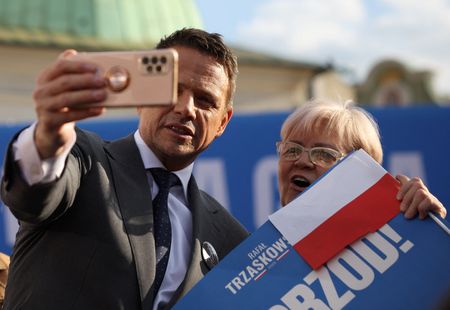By Linda Pasquini
(Reuters) -Sterling slid against the euro on Wednesday after seven straight days of gains, while it rose against a weakened dollar as the market shed the initial optimism from a de-escalation in U.S.-China trade tensions at the beginning of the week.
The euro was up 0.35% to 84.33 pence, after seven consecutive days of declines.
It hovered around early April levels, halting a progressive slide against the pound from a peak at 87.38 pence on April 11.
“It does seem that the 84 level is offering pretty good support,” Rabobank’s head of FX strategy Jane Foley said, adding that sterling may struggle to advance further against the euro unless growth data starts to significantly improve in Britain relative to market expectations.
“There is a risk that growth could come in below the 1% level for 2025. If those risks increase, I think sterling will again be on the back foot against the euro.”
British GDP data for both March and the first quarter as a whole will be released on Thursday.
It will give initial hints at where 2025 growth lands, but could also complicate the picture. Sanjay Raja, senior economist at Deutsche Bank, expects the quarterly data to show a significant jump, but a short-lived one, and that GDP will shrink in the second quarter.
That adds additional uncertainty for investors trying to judge the Bank of England’s policy path.
Data published on Tuesday showed a fall in employment but economists said the drop appeared modest. Bank of England interest rate-setter Catherine Mann said on Wednesday that she voted to keep borrowing costs on hold last week – having sought a large 50-basis point cut in February – because Britain’s labour market had been more resilient than she expected.
The market is pricing in a around 50 basis points of easing by the end of the year, with no change in policy at the next BoE meeting in June, but a cut by a quarter of a point expected in August.
The pound gained 0.38% on the dollar to $1.33535, as the greenback extended its losses against other currencies after weaker-than-expected U.S. consumer inflation data bolstered the case for Federal Reserve easing just as global trade tensions cool.
“So much of what’s happening in cable has been driven by the U.S. dollar,” Foley said, referring to the sterling/dollar pair.
(Reporting by Linda Pasquini, editing by Alun John and Ed Osmond)









